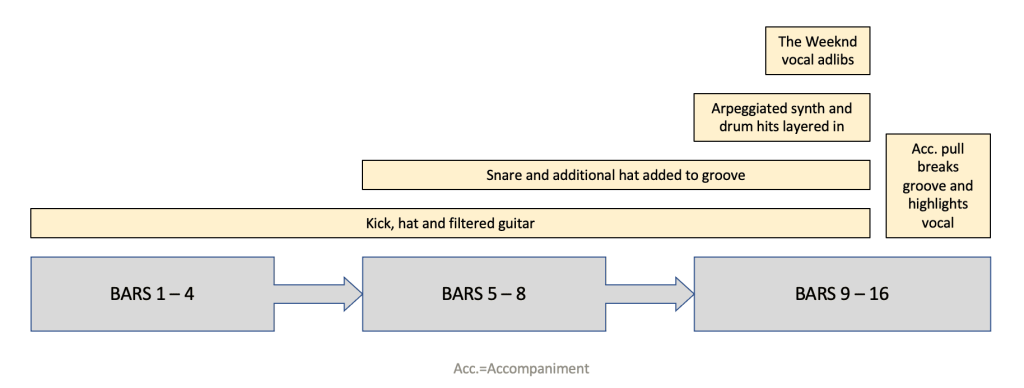[Header2 header=” With the ever-shrinking attention spans of today’s listeners, it’s more important than ever to be able to hold their attention. “]
And it is particularly important right at the beginning of a song in the intro. Too long, and the listener could easily lose interest and tune out before ever getting to the meat of the song. For this reason, hit song intros have generally trended on the shorter end of the spectrum; since 2016 (through chart dated 9/4/21), they averaged at just 14 seconds in length with the vast majority – three quarters – landing under 19 seconds.
However, there are always exceptions to the “rule.” During this same time, 5% of Top 10 hits had their intro lasting 30 seconds or longer, two-thirds of which were hip hop songs along with one-third pop and R&B. The latest addition to the “30+ second intro club” is The Weeknd’s most recent hit, Take My Breath, which was co-written by the same masterminds behind the record-breaking Blinding Lights (which also has a super-lengthy intro at 28 seconds): Max Martin, Oscar Holter, Belly and The Weeknd. And considering the prowess of these hitmakers, you know that it was done with intent and purpose.
[Header2 header=” So how did such a lengthy intro manage to hold audience attention?”]
Clocking in at 31 seconds/16 bars in length, Take My Breath’s intro largely takes after Blinding Lights’s. Like its predecessor, it consists of three distinct segments that progressively evolve to maintain the listener’s interest and engagement:
- Segment 1 (Bars 1-4): The listener is immediately locked into a grooving four-on-the-floor kick and hat groove along with a repetitive guitar pattern, which is processed with filters and delay to provide texture and keep things interesting. All three elements also establish the song’s retro vibe right off the bat, with the drums invoking a classic disco influence and the guitar creating an atmospheric vibe à la Pink Floyd’s Run Like Hell (1979) and Donna Summer’s I Feel Love (1977).
- Segment 2 (Bars 5-8): Four bars in, snare and an additional hat are added to further develop the backbeat. Additionally, the retro timbre of this snare puts the song in-line with the 1980s, which has been a prevalent decade of influence in The Weeknd’s music and helps to create familiarity with his previous hits.
- Segment 3 (Bars 9-16): With the core groove remaining in effect, a repetitive, shimmering synth arpeggio is added to the mix along with 1980s-timbred drum hits at the end of bars 10, 12 and 14. In the second half of the segment, The Weeknd adds in a “yeah, yeah, yeah” adlib, subtly heightening anticipation for the full entrance of his lead vocal. Then, after seven repetitive bars, a full accompaniment pull S.I.A. (section impact accentuator) is used at the very end of the section, breaking the listener out of the hypnotic groove and placing their focus fully on The Weeknd’s vocal.
While the elements added in each segment may seem minimal, they are all integral in keeping listener engaged and establishing key aspects of the song. So while a super-long intro like this is an anomaly, when done with intent and executed with precision, it can yield great results.
To view this technique in the Techniques Library, click here.
